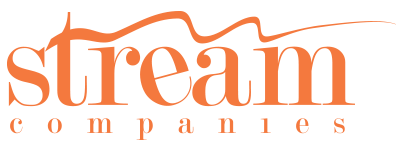By now, many business owners are fully aware of the benefits of content marketing – from SEO, to building trust with new prospects and generating new leads, to sales support and customer loyalty, and so on.
But while the benefits of content are easy to see, when it comes to content generation and content planning each month, many business owners and marketing executives find themselves with a severe case of content marketing block.
What do I write about next? What type of content should I publish? How do my team and I stick to schedule? How do I get the most out of my ongoing content?
To help answer these questions, I’ve outlined the top four tips to creating a monthly content marketing plan, so you’re always prepared… before the first of the new month
1. Think in Themes
Instead of just pulling random topics and ideas together that you think your audience is interested in, think of your monthly content strategy as one big theme that casts across the entire month, or a few (no more than four) smaller themes, categories, or focuses of interest each month.
For example, if you’re an automotive dealership, one monthly theme for February may be about car care in the winter months. This could then be broken up into topics such as caring for your tires and your engine, protecting the interior and exterior of your car, helpful tips for safe driving during the cold months, etc.
Doing this will not only help with topic generation, but it will also give interested readers the option to learn more about a particular topic without ever leaving your site. And the longer they stay on your site reading your content, the more opportunity there is to build trust and convert them into a qualified lead, while positioning yourself and your business as a thought leader.
2. Build Some Hype
Similar to themes, when building your content plan for the next 30 days, consider any events, promotions or significant pieces of educational offers (such as an eBook) you’ve completed and are planning to launch for the upcoming month. Then, think about ways you can use your ongoing content, like your email newsletter and blog, to support these individual events, promotions or educational offers.
For example, let’s say your team has a webinar planned for the end of next month. Dedicate the week before the webinar is held to focus your regular, ongoing content on driving your audience to register for the webinar. Have each blog topic focused on the general topic of the webinar and utilize calls-to-action in each to continuously encourage readers to sign up for the webinar and learn more about a topic they’re interested in.
Or, let’s say, on the 1st of next month, you’re planning to launch that eBook you’ve been working so hard on. Just like the webinar, dedicate a specific amount of time to produce supporting content that markets your new eBook, driving interested prospects to a dedicated landing page to convert and download.
3. Report and Repurpose
If content theme ideas aren’t flowing as easily as you thought, or your company’s event calendar is looking a little empty… don’t stress! Another great way to come up with themes and topics is to take a look at the performance of your content from previous months.
Did a particular eBook get tons of downloads? Which blog post generated the most traffic or shares? Was there a popular webinar that received a lot of attendees?
Pick these pieces out and consider a theme you can pull from each, and better yet – how you can repurpose these pieces into new material.
Since people digest content in a variety of ways (listening, watching or reading), consider turning your latest webinar into an eBook, or your blog post into a 3 minute educational video. This way, you’ll be expanding your reach by connecting with customers through a variety of different channels.
4. Mark Your Calendars
You’ve probably already heard this more than once, but if you haven’t started a content marketing calendar, you’re putting your business at a huge disadvantage when it comes to producing and executing content on a consistent basis.
Having a calendar is especially important when it comes to your ongoing, regular content. For some businesses who blog each business day, attempting to plan the day of can be a disaster – especially if you have multiple contributors or writers.
To help you get started, HubSpot offers an excellent blog editorial calendar template that you can tweak or modify according to your business and the content you’re creating. Click here to download the template.
When populating your calendar, start with the basics. Your themes, promotional periods to market your events or new offers, the types and amount of specific content you want to create throughout the next month (blogs, email, videos, webinars, whitepapers, infographics, etc.), the name of the individuals in charge of producing each piece of content, and the specific due dates and posting dates.
Now that you’ve got the planning down, check out this eBook to learn how you can improve your current content marketing strategy to engage with new prospects, convert more leads, and nurture your opportunities.
All the best,
Sarah D’Andrea
Sarah D’Andrea is an Inbound and Content Marketing Manager at Stream Companies, a Philadelphia area advertising agency.

